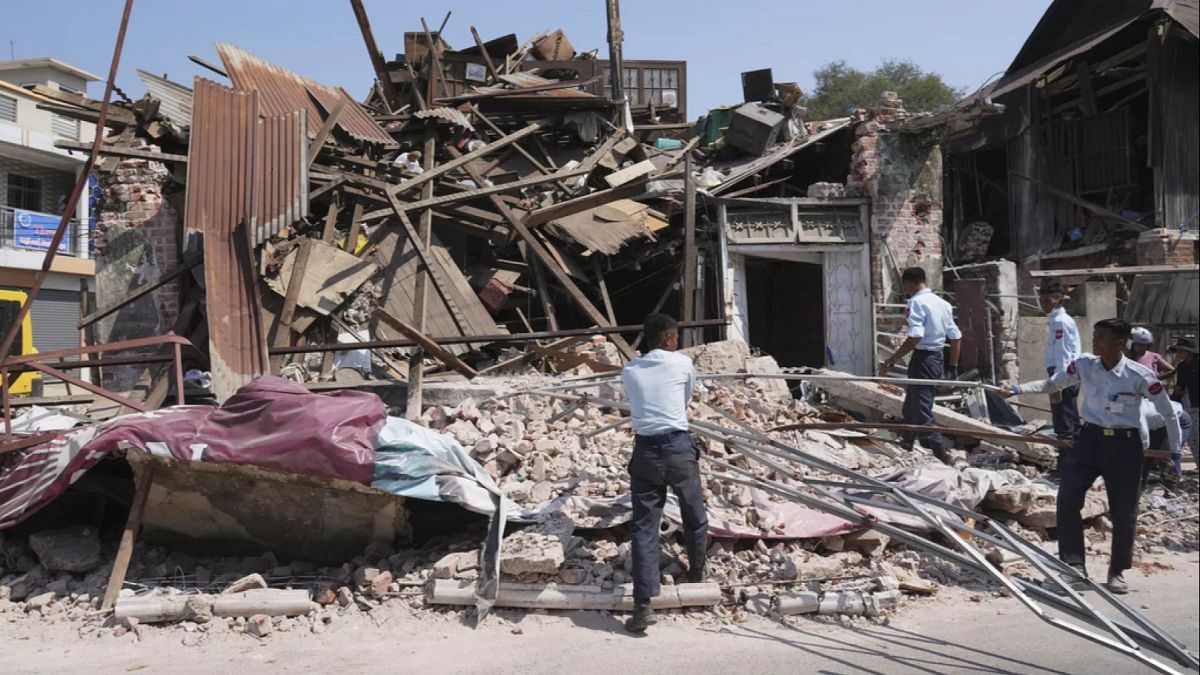Warnings of acute hunger and disease outbreaks come as the confirmed death toll keeps on rising.
Over 2,000 people have died in last week’s earthquake in Myanmar, state media reported on Monday. As rescue teams continue to search for survivors, stories of the disaster’s human cost are emerging.
The 7.7 magnitude earthquake struck on Friday near Mandalay, Myanmar’s second-largest city. The earthquake caused serious damage, including damage to city’s airport, damaged roads, and the collapse of buildings across central Myanmar.
Then on Sunday, a 5.1 magnitude aftershock hit the area again.
According to local reports, 200 Buddhist monks were killed when a monastery collapsed, 50 children died when a preschool classroom fell down, and 700 Muslims were killed while praying at mosques during Ramadan.
Aid groups are concerned that the disaster could lead to more hunger and disease outbreaks.
Relief efforts are facing many difficulties, including power outages, fuel shortages, and spotty communication. There is also a shortage of heavy machinery, which has slowed down search-and-rescue operations.
Meanwhile, emergency workers and civilian volunteers are combing through the rubble by hand in temperatures above 40°C.
At Mandalay’s U Hla Thein monastery, rescue teams are still searching for about 150 dead monks.
Full impact still unclear
Lauren Ellery, deputy director of the International Rescue Committee in Myanmar, said that information about the full extent of the destruction is still limited.
“We’re still unsure about the full extent of the destruction at this point,” she said.
Reports from a town near Mandalay indicate that up to 80% of buildings have collapsed, but slow communication has delayed news coverage.
The World Health Organisation reported that three hospitals have been destroyed, and 22 others have been damaged. The UN also stated that more than 10,000 buildings have been destroyed or severely damaged, including a preschool that collapsed in Mandalay district, killing 50 children and two teachers.
On Saturday, the resistance movement fighting Myanmar’s ruling military junta announced a partial ceasefire to facilitate rescue efforts.
Rescue teams from Russia, India, and several Southeast Asian countries have joined the effort. On Monday, an Indian team was seen digging through rubble in Mandalay, recovering one body. Chinese rescue teams have pulled six survivors from the rubble in severely hit Nay Pyi Taw and Mandalay.
Several other contributors, including the EU, Britain, and Australia, have pledged millions of dollars in aid.
Looking for survivors in Bangkok
Meanwhile, US military personnel have been sent to assist in Bangkok, where the earthquake killed at least 18 people, many at a construction site where a partially built high-rise collapsed. Another 33 people were injured, and 78 remain missing.
On Monday, heavy machinery was paused as rescue teams used equipment to search for survivors. Bangkok Governor Chadchart Sittipunt confirmed that signs of life were detected on Sunday night, but experts couldn’t determine if they were caused by machine error.
Naruemon Thonglek, who lost her partner and five friends in the collapse, shared her hope for their survival: “A part of me still hopes they will survive,” she said.
Video editor • Lucy Davalou

